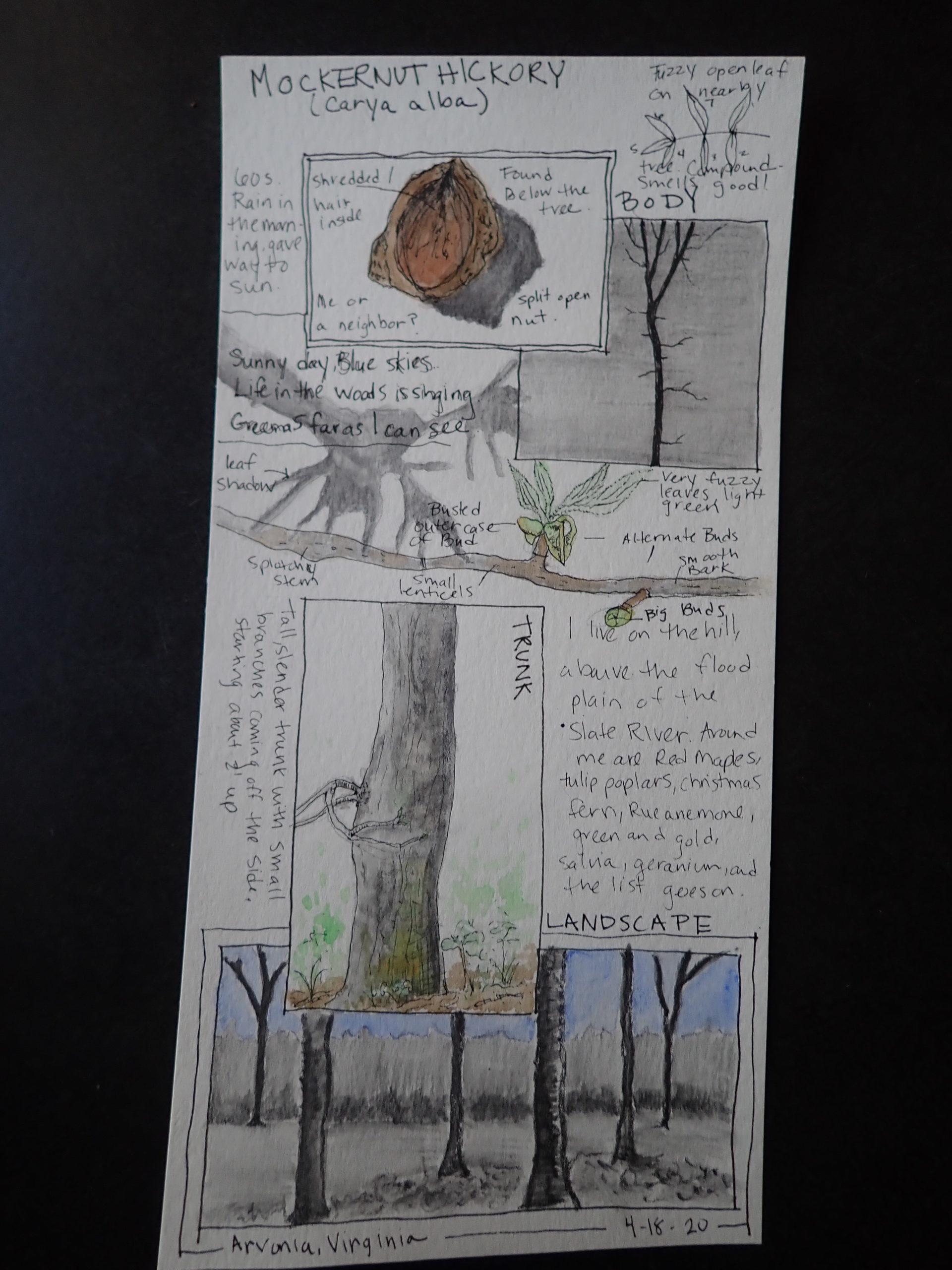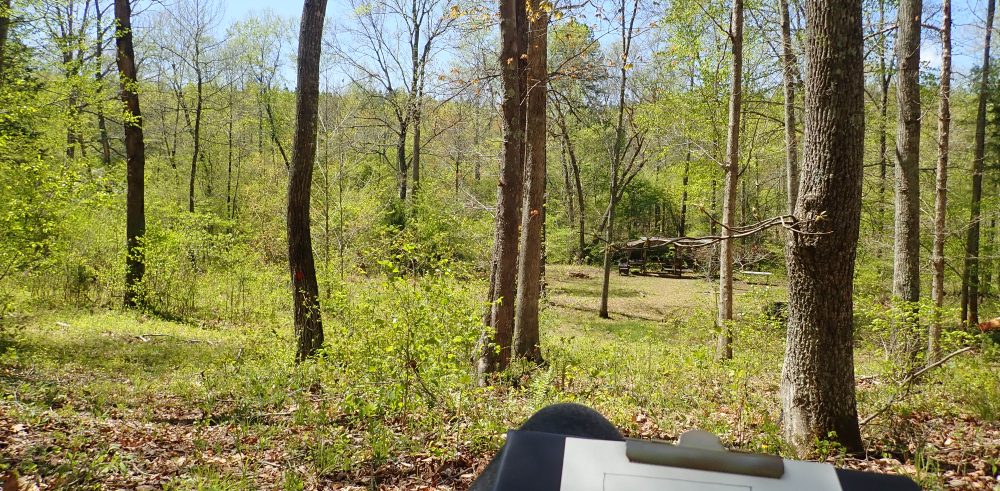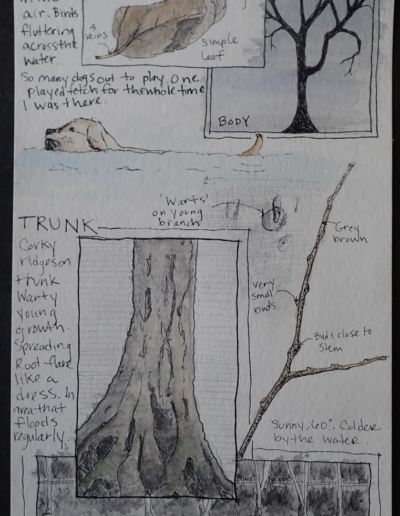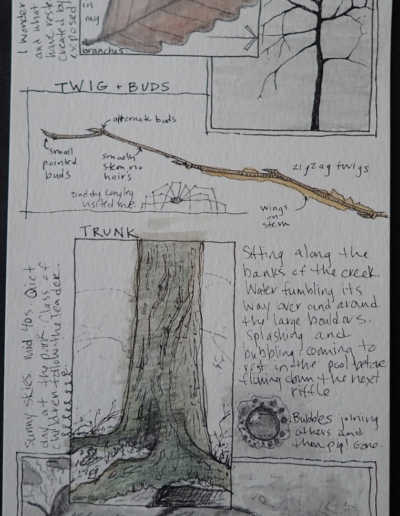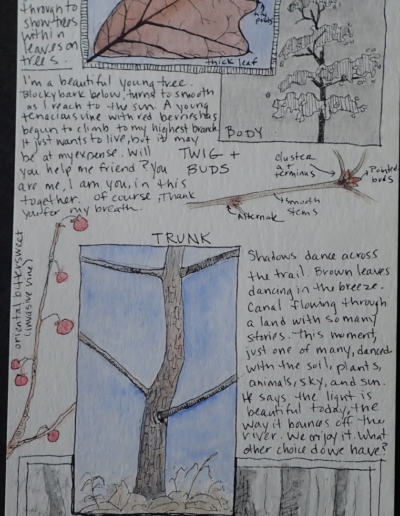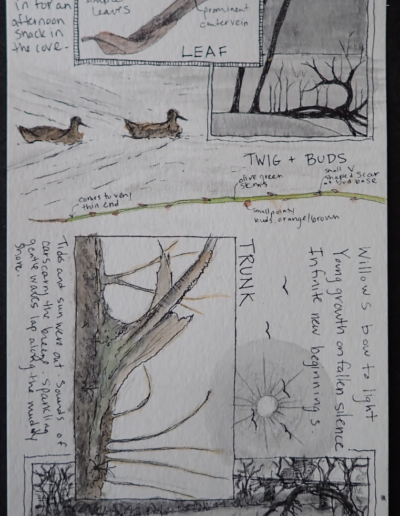What I love most about nature journaling is it gets me outside, focuses my mind, lets me learn something new, and lets me create with my hands! My latest project was a tree series where my assignment was to walk along a creek or the James River, find a tree that catches my eye, draw and write through observation, and then figure out what it is. Feel free to adapt and have fun with it!
1: Get Ready
I begin with laying out boundaries on my paper where I’ll draw different aspects like the landscape, trunk, leaf, silhouette, buds, and write.
I keep a small bag that is dedicated to my nature journaling, so it’s easy to just pick up and go. What’s in my bag? Watercolor palette, small container of water, paintbrushes, watercolor graphite pencils, pencil sharpener, phone, small knife, and a camera. In addition, I always take my clipboard, a big bottle of water, and a foldout camping chair (love this thing).
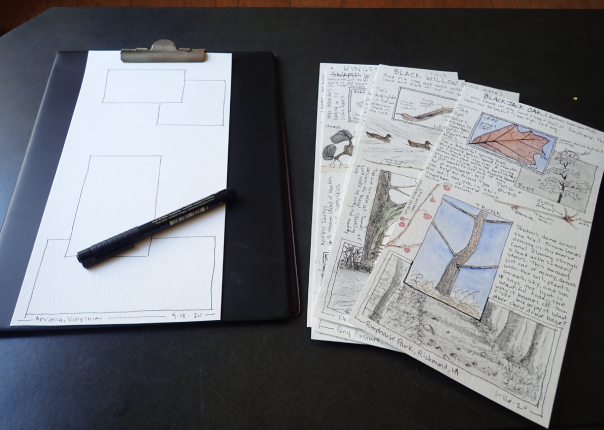
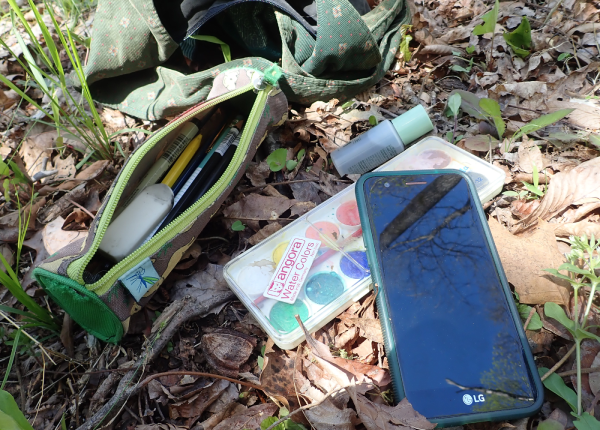
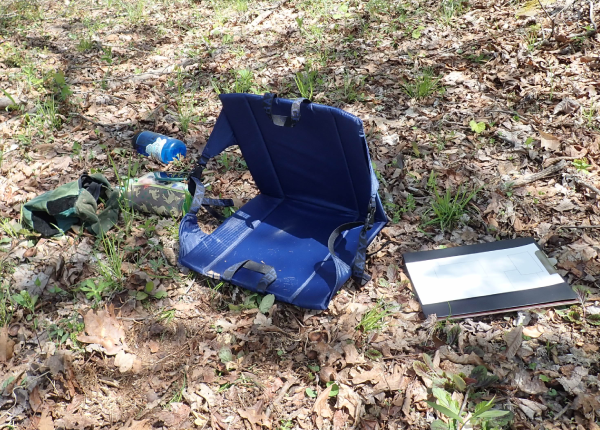
2: Follow Your Interest
Grab your supplies, go outside, and let your interest guide you to a tree. I went walking in our woods along the Slate River in Buckingham County and was drawn to this tree because of its beautiful budding leaves.
3: Draw and Write
Find a good spot to sit with your tree. I usually start with closing my eyes and breathing for a minute to settle in.
I carry this bookmark with John Muir Laws advice. I personally love writing haikus (5-7-5), so you’ll usually find them on my drawings. On this day, my haiku was:
Sunny day, blue skies
Life in the woods is singing
Green as far as I can see
I like to start my drawing with the landscape to get myself connected to the land.
Then move on to exploring the trunk and how it meets the ground. From there, get up close and personal with its branches and buds. Note any detail you can describe like are the leaves alternate or opposite, hairy, pointy or round buds, colors, etc.
Are there any leaves, nuts, flowers, or other items around it that you may want to draw? Do it!
Lastly, it’s time to bid farewell to your new tree friend. Walk a good distance away so you can see the full tree. Either sit and draw its silhouette while you’re outside, or take a photo and draw it back at the house.
If you need some drawing tips, this is a great book with a wide variety of exercises to choose from.
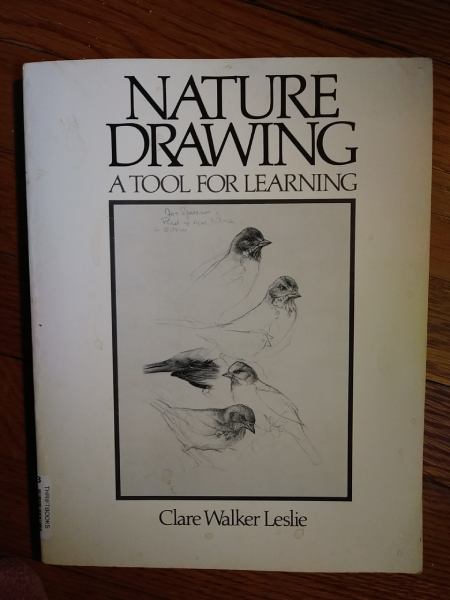
5: Share
Share your work with others! Nature journaling really isn’t about the final product, it’s about the process and the joy and calm it can bring to people. Don’t we want all of our friends to have a little of that? I’ll start. Here’s all of my tree sheets thus far!
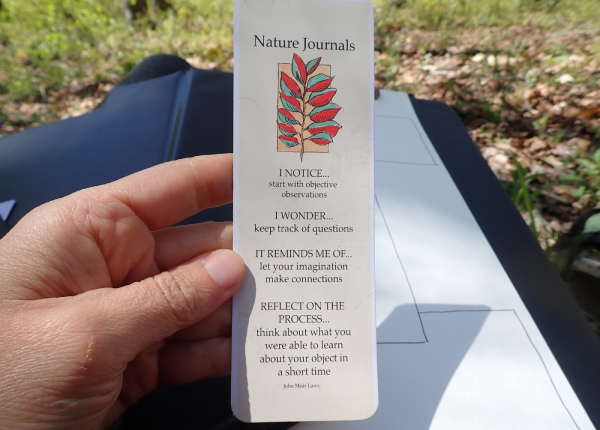
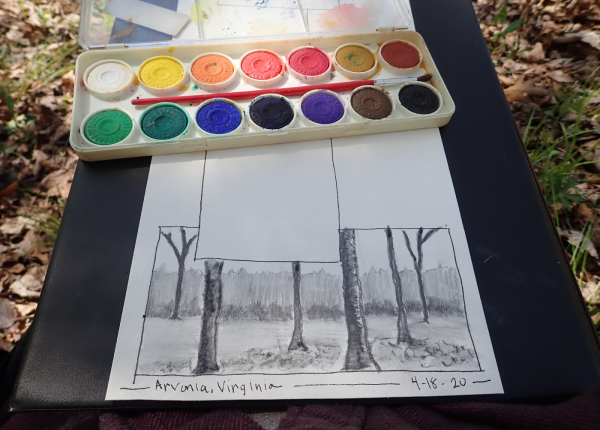
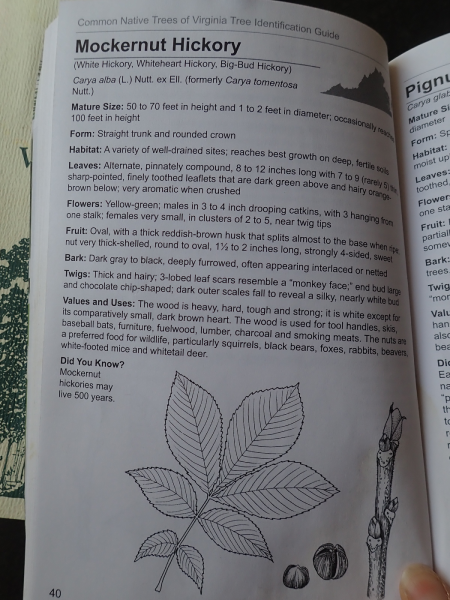
4: Identification
Either out in the field, or when you get home, bring out your favorite ID books and figure out the species of your tree. My mystery tree was a Mockernut Hickory!
